The preview of the new Porro flagship store in Milan took place during the last Milano Design Week, when it was still being renovated – at that time, it was decked in colours. Today, with the construction site closed, the space has acquired its precise physiognomy. A container of ultra-light hues, with a double view of the city: the six-metre-high windows on Via Visconti di Modrone, and the more domestic, rationalist windows on the parallel Via Ronchetti.
We visited it with Maria Porro, Marketing and Communications Director of the family business, and Piero Lissoni, Art Director, who signed its design.
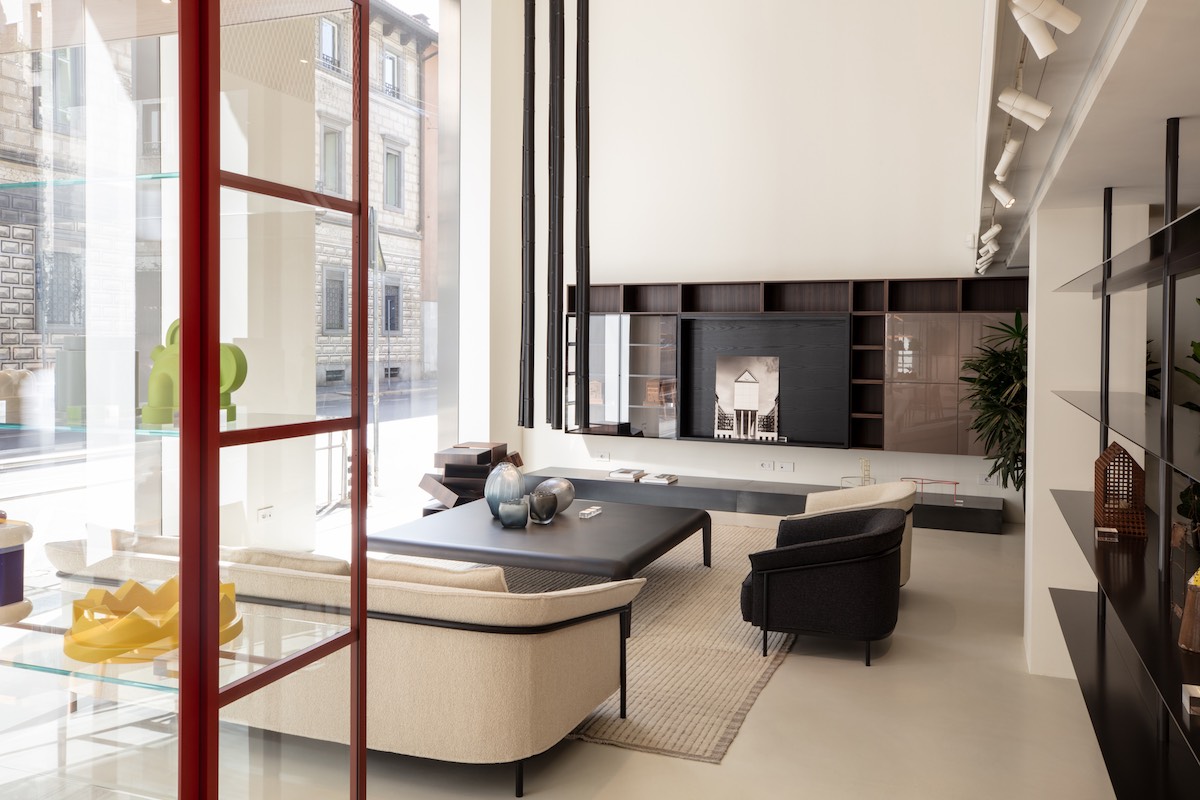
“We aimed to create a sculptural box, working with subtraction, essentiality, and the balance of spaces,” explains Maria Porro. “It’s not a commercial approach, it’s a design approach. This is important to us. We immediately liked the double height of this place, which is rare in Milan. And on the upper floor, the windows give a villa-like dimension, with a view of the most hidden, intimate Milan. Here the furniture enters like architectural presences that define the spaces, almost like art presences.”
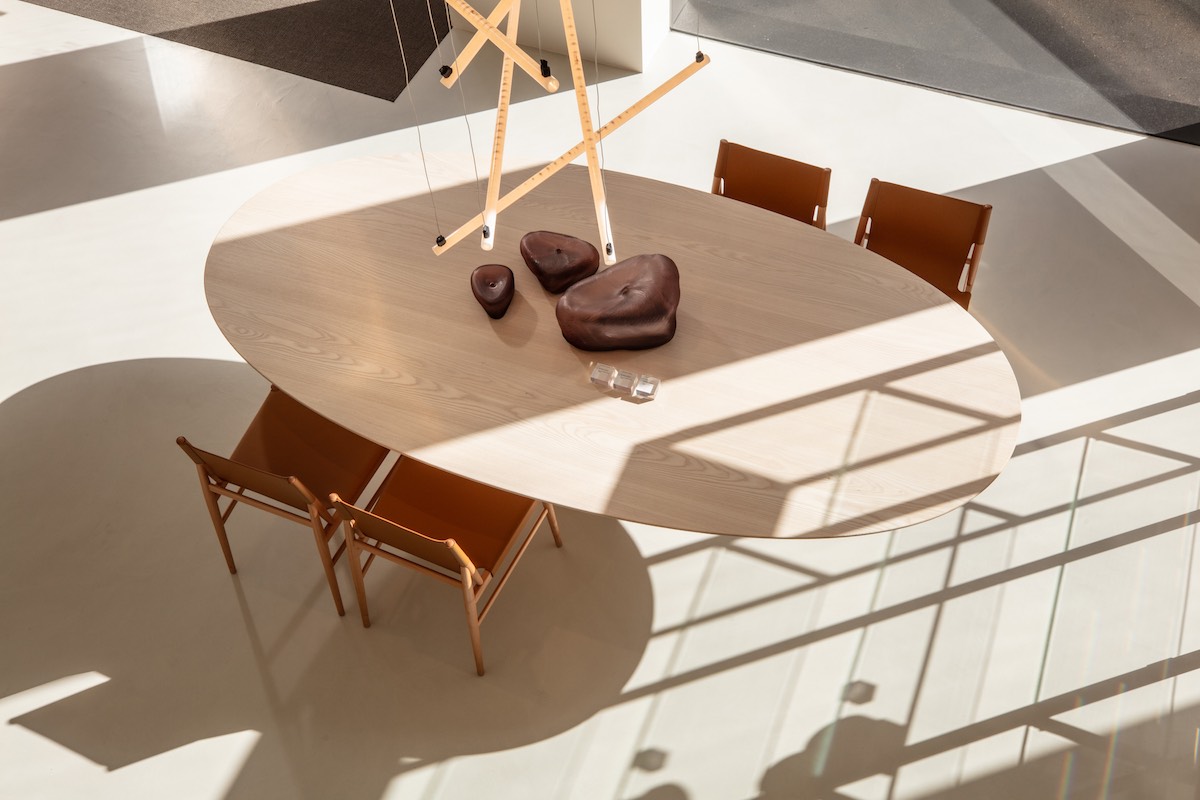
The showroom is not just about furniture. “We have established several collaborations: with the Corraini publishing house, which reissues the work of Bruno Munari, a piece of history for me. It was Munari himself who designed the company logo with my grandfather. Then, there is the Antonia Jannone gallery of architectural drawings. We are partnering also with Michela Cattai, who designs glass vases; with a theatre tailor, who lent us costumes, and with Francesco Balestrazzi – a friend – who makes sculptural hats. Then there is Archivio Mendini, with whom we both have a working relationship; they lent us pieces from their private collection. And then there is a selection of Taschen titles, all for sale, curated for us by Studio Ossino”.
“What fascinated us about this place was the presence of these television-like windows on Via Visconti di Modrone,” explains Piero Lissoni. “They were hidden by beams, mezzanines, a terrible thing. Six huge openings to the street and, at the back, an apartment with Bauhaus-style windows. I told myself, ‘This is Porro’s new house’. We had to reconnect three separate spaces, which was a bit tiring, but I think it turned out to be a beautiful place, which dialogues with the exterior, closer to a gallery than to a shop.
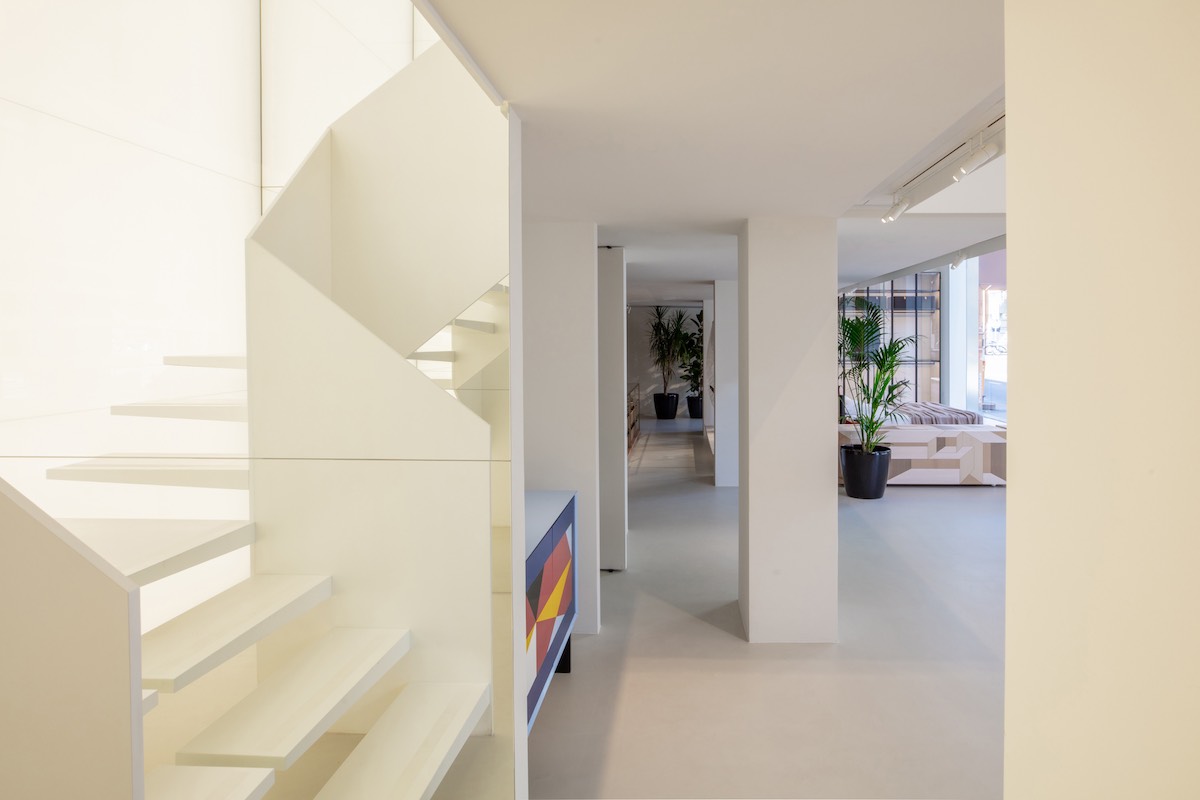
Lissoni is already looking ahead: “For the opening, we decided not to be too radical, but soon there will be some mischief, as I occasionally do. I would like to work on the scale of the installation – for example, by installing six tables, all the same, but in different colours. I’d like to think less classically. The space is there. I have tidied it up, removed everything that is not needed, and added only some technical elements. A scenic machine. I like the staircase that connects the levels, a metal origami. The language of technology helped me think about the language of architecture. Almost as if we had made a little museum.”
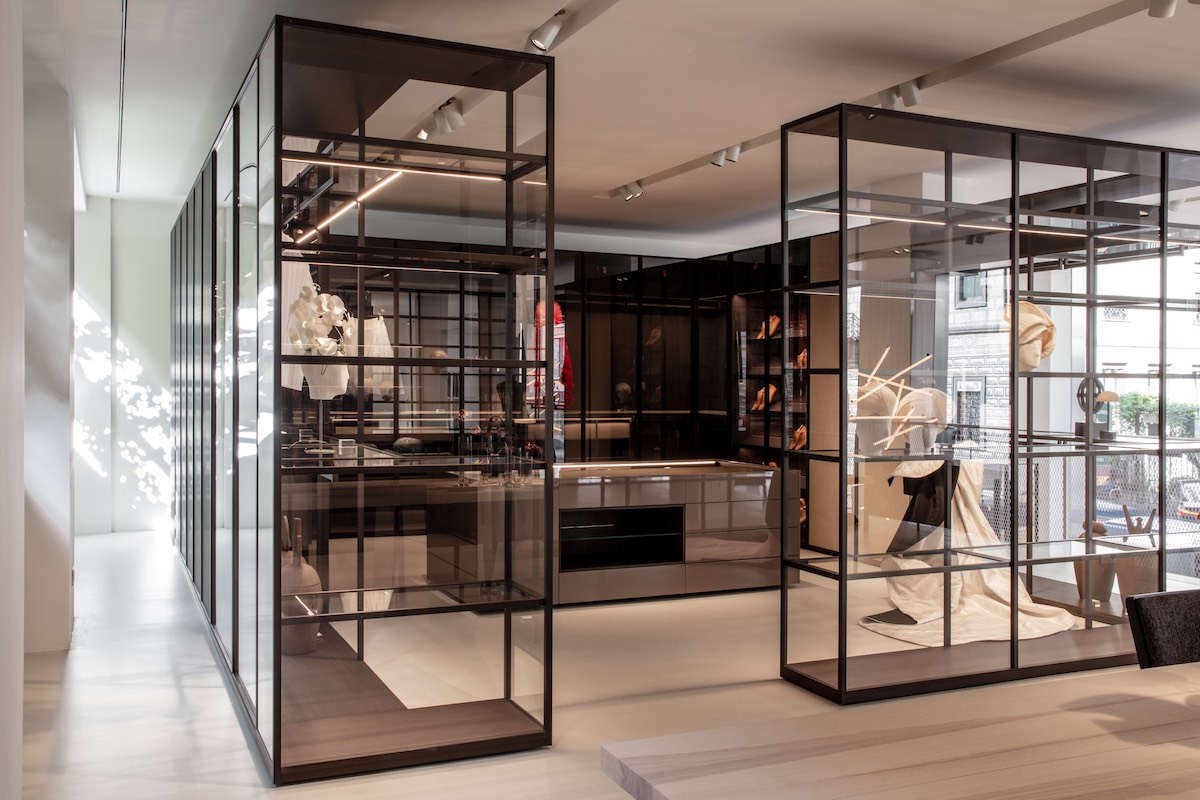
On the reason for a change, Maria Porro rebounds. “The courage to leave Via Durini, where we had been for eighteen years, came from this space, which we fell in love with. We immediately realized that we could create a new project here, something that would add value to the company. We brought with us the chandelier that Piero had designed for the opening of Via Durini, a unique piece that we have always kept. It is like the passing of the baton. Not a change, but an evolution. The new space will change often since we want it to be a space for experimentation. We needed to confront ourselves with something different.”
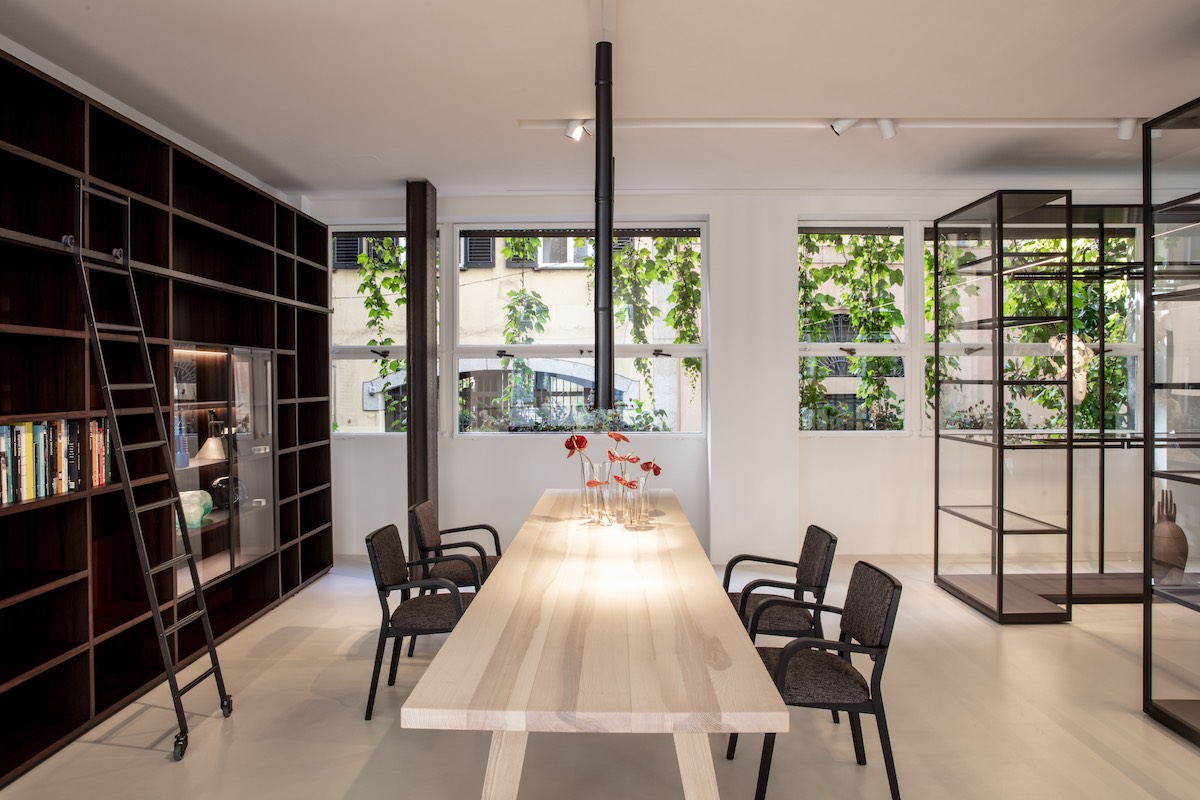
This space can be experienced in many ways. “I love the upper floor,” she adds. “It has an additional entrance from via Ronchetti, a pedestrian, Milanese, intimate street. We will make it live. We have already had dinners here. It is a place where you can sit and feel good. From this level, you can see a magnolia and ivy falling. The courage to change came also from this view of greenery. While, on the other side, the city runs.”







